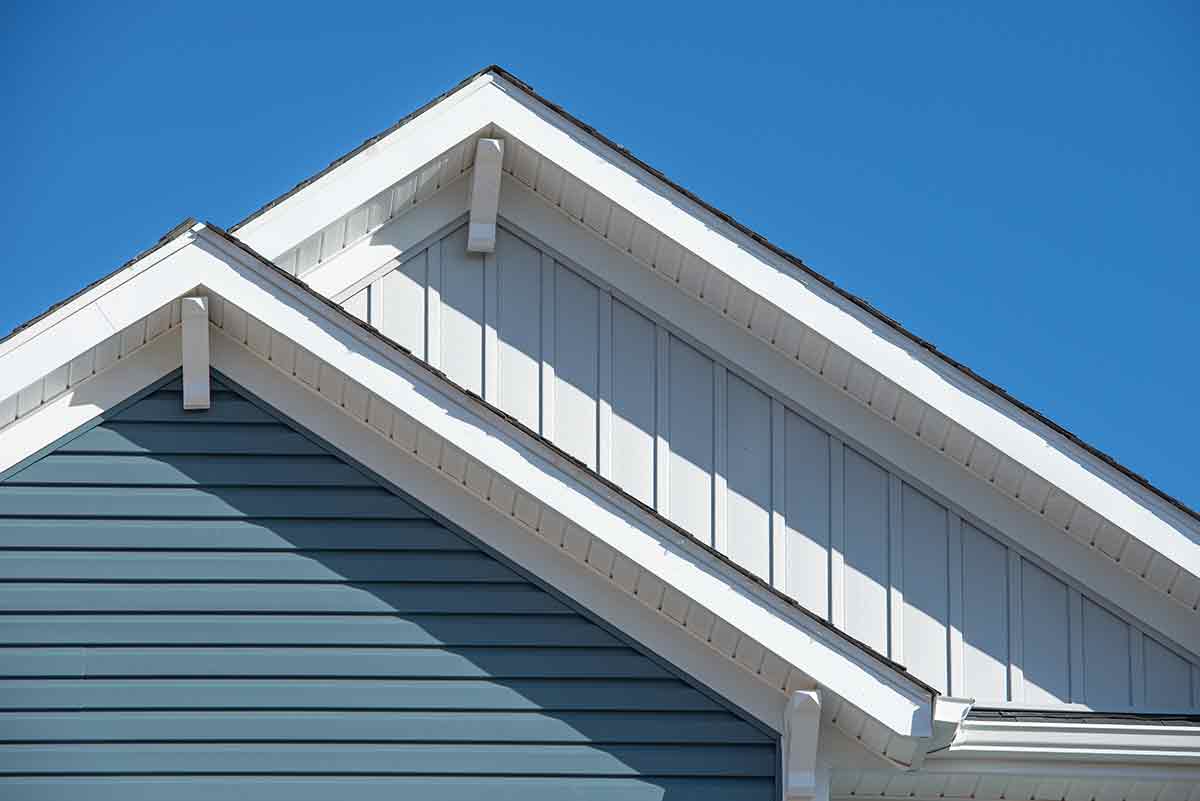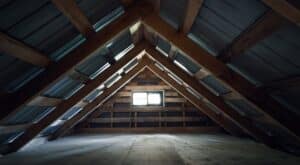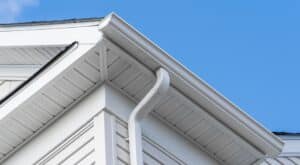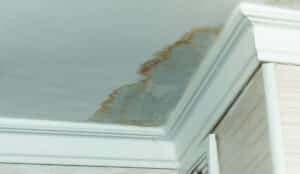Explaining the Basics of Roof Fascia
When it comes to roofing, there are many components that work together to provide a functional and aesthetically pleasing structure. One such component is the roof fascia. In this section, we will delve into the basics of roof fascia, including its purpose, installation process, and potential need for replacement.
The roof fascia refers to the horizontal board or trim that runs along the edge of the roofline. It is typically installed just below the edge of the roof and serves multiple important functions. First, it acts as a support for the lower edge of the bottom row of shingles or tiles, helping to keep them in place and prevent them from sagging or falling off. Additionally, it provides a barrier against water intrusion by directing rainwater away from the underlying structure of your home.
Roof fascia boards can be made from various materials such as wood, aluminum, vinyl, or composite materials. The choice of material depends on factors like durability, cost-effectiveness, and desired aesthetic appearance.
Installation of roof fascia involves attaching it securely to the rafter tails or trusses using nails or screws. Proper installation is crucial to ensure its stability and effectiveness in protecting your home from water damage.
Over time, due to exposure to weather elements and general wear and tear, roof fascia may require replacement. Signs that indicate a need for replacement include rotting wood or visible damage such as cracks or splits in non-wooden materials. It is essential to address any issues promptly since damaged fascia can compromise both the structural integrity and visual appeal of your roofing system.
Understanding the basics of roof fascia is important for homeowners who want to maintain their roofs’ functionality and appearance. Whether you are considering installing new roof fascia or replacing existing ones due to damage or deterioration over time, being informed about this crucial component will help you make informed decisions regarding your roofing needs.
If you have questions that we don’t cover, please call us or use this form to reach out to us.
The Role of Roof Fascia in Protecting Your Home’s Structure
Roof fascia plays a crucial role in protecting the structure of your home. It serves as a protective barrier between the edge of the roof and the elements, preventing water damage and other potential issues.
Fascia and soffit, also known as roof edge trim, are typically made of wood, aluminum, or vinyl. They are installed along the eaves of the roof to cover and protect the exposed ends of the rafters.
One of the key functions of roof fascia is to direct water away from your home’s foundation. It helps to prevent water from seeping into your walls or basement, which can lead to costly structural damage over time. By channeling rainwater away from your home, fascia protects both the exterior and interior components.
In addition to its protective role, roof fascia also enhances the aesthetic appeal of your home by providing a finished look to your roofing system. It can be customized to match your architectural style and can even be painted to complement your exterior color scheme.
Regular maintenance and inspection of roof fascia are essential for its longevity and effectiveness in protecting your home’s structure. Over time, fascia may become damaged due to weather exposure or pests. Therefore, it is important to address any signs of deterioration promptly.
→ Above Roofing will make sure that your fascia is protecting your home.
The Different Materials Used for Roof Fascia and Their Pros and Cons
There are several materials commonly used for roof fascia, each with its own set of advantages and disadvantages.
Wooden fascia boards are a traditional choice that adds a natural and timeless appeal to the roofline. They can be easily customized and painted to match the desired look. However, wooden fascias require regular maintenance, such as painting and sealing, to prevent rotting or warping due to exposure to moisture.
PVC fascia boards have gained popularity in recent years due to their durability and low maintenance requirements. PVC is resistant to rot, insects, and weathering, making it an excellent choice for areas with high humidity or extreme weather conditions. Additionally, PVC fascias are available in various colors and styles, allowing homeowners to achieve their desired aesthetic without the need for frequent upkeep.
Aluminum fascias offer exceptional strength and longevity. They are lightweight yet sturdy enough to withstand harsh weather elements. Aluminum is resistant to rusting or corrosion, making it suitable for coastal areas where saltwater exposure is common. However, aluminum fascias may dent or scratch more easily compared to other materials.
Composite fascias combine different materials such as wood fibers and recycled plastics. This combination results in a strong and durable product that mimics the appearance of real wood while offering better resistance against rotting or warping. Composite fascias require minimal maintenance but can be more expensive than other options.
When choosing the material for roof fascia boards, it’s important to consider factors such as durability, maintenance requirements, aesthetics, climate conditions, and budget constraints. Consulting with a professional roofing contractor can help determine which material best suits your specific needs while ensuring a long-lasting and visually appealing roofline.
Signs of Damage to Look Out for in Your Roof Fascias
It is important for homeowners to keep a close eye on the condition of their roof fascias, as any signs of damage can lead to further issues if left unattended. One common problem with deteriorating roof fascias is sagging or warped boards. This can occur due to moisture damage or age-related wear and tear. When the fascia boards start to sag or warp, it compromises the structural integrity of the roof and can result in leaks or even collapse if not addressed promptly.
Another sign of damage to look out for is peeling paint on the fascias. Peeling paint is often an indication that the fascia boards have been exposed to excessive moisture, which can cause them to rot over time. When the paint starts peeling, it not only affects the aesthetic appeal of your home but also exposes the wood underneath to further damage from water infiltration.
If you notice any of these signs in your roof fascias, it is crucial to take action immediately. Ignoring these issues can lead to more extensive and costly repairs down the line. Hiring a professional roofing contractor to assess and repair the damaged fascias is recommended, as they have the expertise and tools necessary to address these issues effectively.
Regular inspection and maintenance of your roof fascias can help prevent significant damage and prolong their lifespan. It’s always better to be proactive in identifying and addressing any signs of deterioration before they escalate into more serious problems for your home’s overall structure.
Roof Fascia Maintenance Tips to Ensure Longevity and Functionality
Maintaining the roof fascia is crucial to ensure its longevity and functionality. Regular cleaning and painting of the fascias can help protect them from weathering, moisture damage, and rot. Additionally, inspecting the fascias for any signs of damage or rot is essential to catch potential issues early on and prevent further deterioration.
Cleaning the fascias should be done at least once a year to remove dirt, debris, and mildew that can accumulate over time. A gentle detergent solution and a soft-bristle brush can be used to scrub away any grime. Avoid using abrasive cleaners or tools that may cause scratches or damage to the surface.
Painting the fascias not only enhances their appearance but also provides an added layer of protection against moisture and UV rays. It is recommended to use exterior-grade paint specifically designed for wood or metal surfaces. Before painting, make sure to clean the fascias thoroughly and allow them to dry completely.
Regular inspections are crucial in identifying any signs of damage or rot in the fascias. Look for cracks, peeling paint, discoloration, or soft spots that may indicate underlying issues. If any damage is detected, it should be addressed promptly by repairing or replacing affected sections.
By following these maintenance tips and addressing any issues promptly, you can ensure that your roof fascia remains in good condition for years to come, contributing to the overall longevity and functionality of your roof system.
→ For roofing information about gutters, read: Is It Time To Replace Your Gutters? 7 Signs You Can’t Ignore
Hiring a Professional Roofer for Roof Fascia Repair or Replacement
When it comes to roof fascia repair or replacement, hiring a professional roofer is crucial to ensure a job well done. A roofing contractor specializing in fascias will have the necessary expertise and experience to handle the task effectively.
One of the key considerations when hiring a roofer for fascia repair or replacement is the cost involved. It’s important to obtain quotes from multiple contractors and compare them. Keep in mind that while cost is an important factor, it should not be the sole determining factor. Quality of workmanship and materials used should also be taken into account.
To ensure you hire a qualified roofer, there are several factors to consider. First, check if they are licensed and insured. This provides protection for both you as the homeowner and the contractor in case of any accidents or damages during the project.
Additionally, look for reviews or testimonials from previous clients to gauge their reputation and level of customer satisfaction. A reputable roofer will have positive feedback from satisfied customers.
Furthermore, consider their experience in handling fascia repairs or replacements specifically. Ask about their track record and request references if needed.
By taking these factors into consideration, you will hire a professional roofer who is qualified to handle your roof fascia repair or replacement needs effectively and efficiently.
Above Roofing is a Local Roofing Contractor
Your roof and your home deserves a roofing contractor worthy of it. Above Roofing is a licensed and insured company that has been in business for over 25 years. We have locations in Jenison, Holland, and Grand Rapids to best serve your roofing needs.
Over the years, we’ve impressed our customers with our integrity, our communication, and our expertise. We sought out and earned the most prestigious qualifications in our industry, and it shows in over 200+ 5-star Google Reviews from our satisfied customers.
During the roofing process, our customers have come to expect honesty – that’s why we’re trusted by so many homeowners s in West Michigan. Plus, our Lifetime Workmanship Warranty means they know they can count on us for many years to come.
Contact us at Above Roofing for help if your home needs a roof inspection or needs roof replacement. Call (616) 662-7663 to schedule an appointment with one of our roofing experts.




